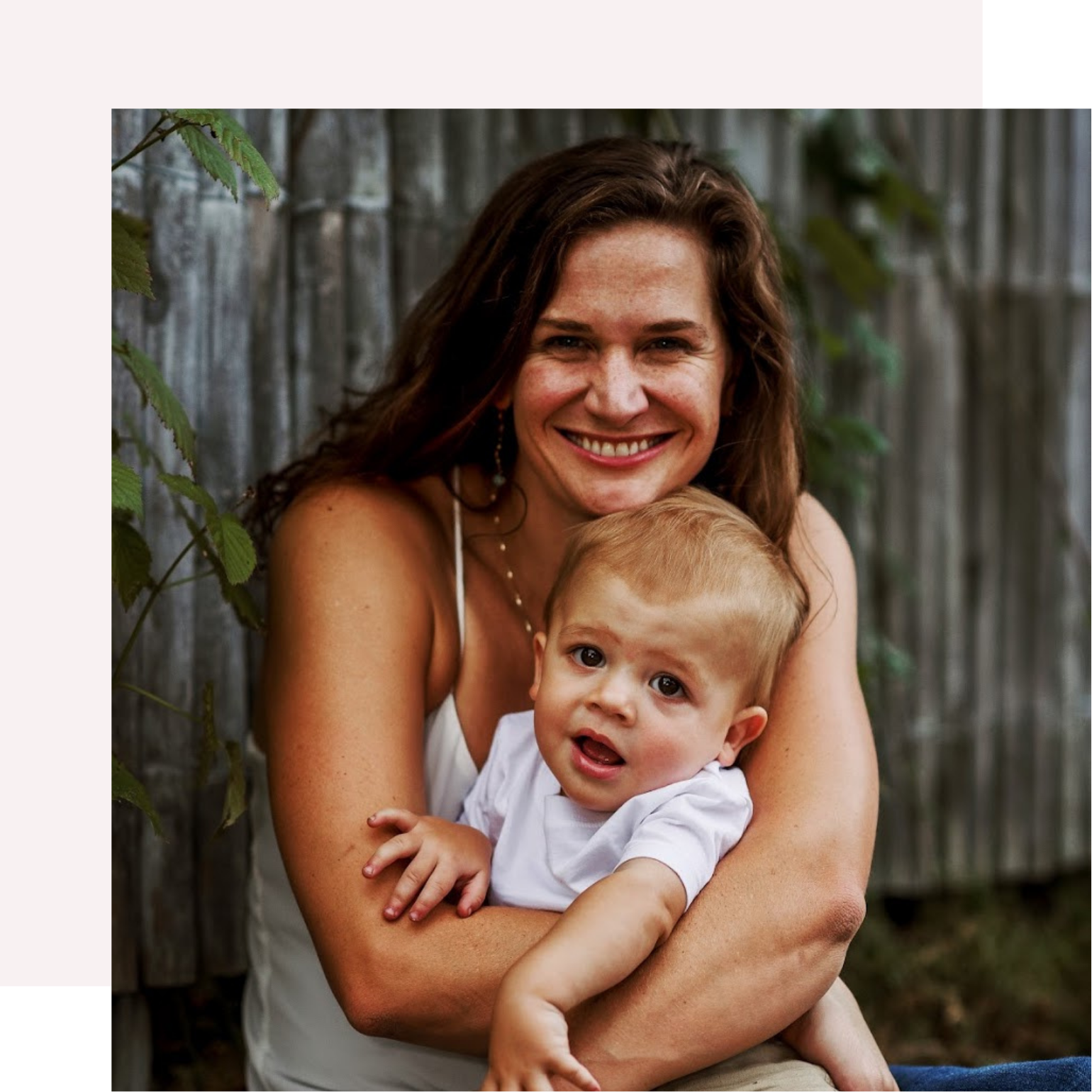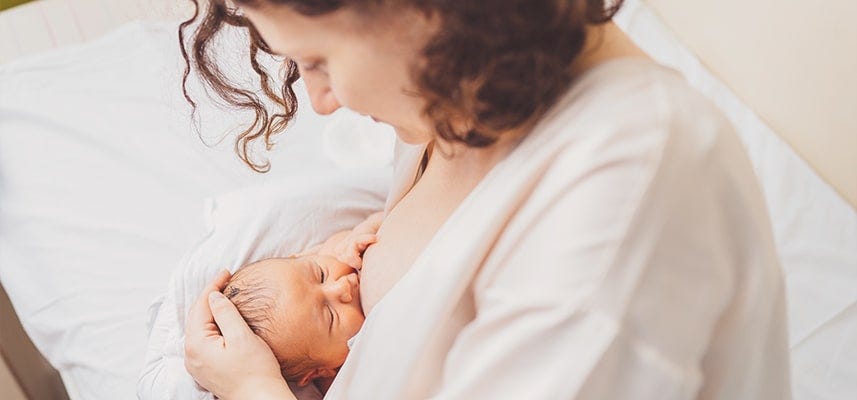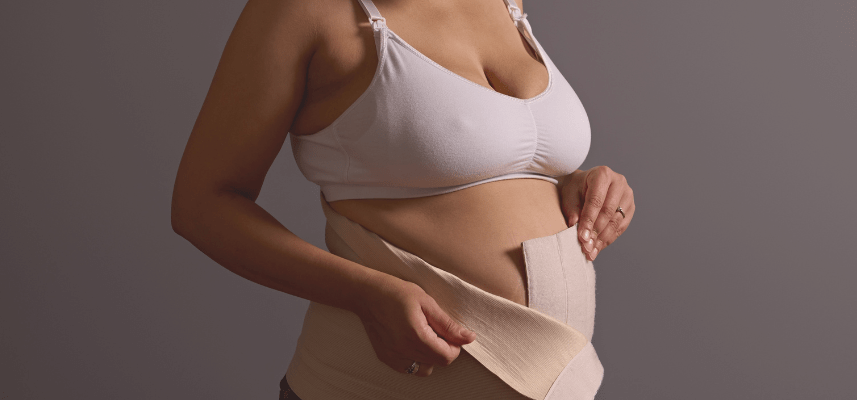Pregnancy and postpartum recovery can be very hard on the body. Your body pre-pregnancy will be different than postpartum body. In just a few short months, you experience weight gain, loose ligaments, and a shifting center of gravity. Pregnant bodies shift and adapt to accommodate the precious little ones they are growing, and you’ll likely notice changes in how you stand, walk, and get around throughout the day. This can lead to back pain, pelvic pain, and wild changes in balance. It’s no wonder people talk about the pregnant waddle!
No matter where you are in your motherhood journey, compression products can likely help! There are a variety of postpartum compression and pregnancy support garments on the market today to help alleviate some of the new aches, pain, and pressure you may experience. These garments are often recommended by physical therapists, prenatal care providers, and experienced moms alike, and they may help reduce back pain and pelvic pain. Some compression garments work by taking pressure off your abdominal muscles, and others help by reducing motion around the sacroiliac joints (the joints that connect the back of the pelvis).
Benefits of Maternity Support
Reduce Back Pain
Pregnancy-related lower back pain can be debilitating, leading to difficulty with basic daily functions like walking, sleeping, and working. This often worsens as the pregnancy progresses. Moms often report that they try a variety of treatments for lower back pain, including physical therapy, topical creams, heat packs, yoga, acupuncture, massage, rest, and chiropractic care. Maternity support garments can be a low-cost, easy-to-use option for relieving the day-to-day strain on your changing body.
Most women report reduced intensity and frequency of lower back discomfort by using pregnancy bands. The extra support seems to allow women to move better, sleep better, and stay more active during pregnancy. Though researchers are not sure what exactly causes these improvements, they think it might have something to do with either the physical back support that the garment provides or the fact that it helps women be more aware of their bodies and, therefore, move more consciously throughout the day.
We’ll give you the lowdown on maternity support bands later in this blog!
Stabilize Your Pelvis
Up to 50% of women report pelvic pain during pregnancy. This includes pain at the pubic symphysis—the joint in the front of the pelvis—and/or pain at one or both sacroiliac joints on the back side. This pain can be debilitating and limit a person’s ability to sleep or move well during pregnancy.
Many compression garments sit low on the hips, wrapping under the belly and around the lower back. These garments also apply pressure to the sacrum and the pelvic bones, which can help stabilize the sacroiliac joints and pubic symphysis to reduce painful movement at these joints. Check out how you can strengthen your pelvic floor.
Improve Balance
Here’s another surprising but important benefit of maternity support garments: They may help improve balance during pregnancy. Approximately 27% of women fall during pregnancy, probably because of the hormonal and structural changes that can alter a woman’s center of gravity. Falling isn’t good for anyone, but it can be particularly dangerous for a pregnant mama and growing baby. Maternity support may help with balance by improving posture and alignment, increasing body awareness, and helping activate core muscles. Low back pain also increases your risk of falling during pregnancy, so support garments that reduce pain can also decrease fall risk.
Boost Day-to-Day Function
Caring for an older child? Working on your feet? Nesting like mad? Maternity support garments may be effective in reducing the impact of pain in daily activities like sleeping, standing up from sitting, walking, and working. Maternity support belts are not specifically recommended for use during sleeping; however, women who have used support belts consistently reported reduced pain during the night, even when they were not wearing support garments. In general, the more consistently a woman uses the garments, the more benefits she experiences over time.
Remember: Maternity compression garments may reduce discomfort and help you move better while you're wearing them, but they aren't a cure-all. For the best effect, they should be used alongside specific strengthening and stabilization exercises. Talk to your healthcare provider for specifics.
What Are Compression Garments?
Pregnancy support and postpartum recovery garments provide gentle support and relief for expectant mamas and those who have delivered recently. Medical-grade compression garments are made of soft, breathable fabric designed to provide strength where it’s needed most: areas that are weakened during pregnancy, like the lower back and core, and regions that may swell and retain fluid, like the feet and ankles.


Types of Compression Garments
Maternity support garments are generally most impactful for people seeking belly support. Many mamas need belly support starting in the middle of pregnancy; this support becomes increasingly important as they enter the third trimester. These garments can be worn as much or as little as you feel is helpful, but shouldn’t be worn full time or used in place of exercise, as this can cause muscle atrophy.
It may be most beneficial to use your support garment during physical activities, such as walking, exercising, household chores, and other activities that require full-body movement.
Some women say that flexible-fabric garments, such as high-waisted spandex maternity leggings, support their bellies quite well. This type of support is less structured and, therefore, potentially less effective for women with pregnancy-related low back or pelvic pain.


Pregnancy Support Bands
The most common style of maternity support is a breathable, structured pregnancy support band or belt that wraps around the lower belly, lower back, and upper parts of the pelvis. These typically use velcro adjustments to accommodate a growing baby bump. Maternity care professionals and experienced moms alike often recommend pregnancy support bands.
Pregnant moms typically wear support garments from around three months of pregnancy until birth to alleviate common pregnancy pain and discomfort. The extra weight of your growing belly is supported by your abdomen, back, hips, and pelvis. As a result, lower back pain is common: 30-78% of women experience low back pain during pregnancy. As your hips loosen and your pelvis expands, more pressure is placed on your pelvic ligaments and joints, which may cause sacroiliac (SI) joint pain or round ligament pain, which is a more visceral internal pain.
Although support garments can’t completely eliminate all pregnancy-related discomfort, women move better, feel better, and fall less often when using a pregnancy support item.
Other Kinds of Belly Support
A sacroiliac, or “SI,” belt can be an excellent tool to reduce pelvic girdle pain (pain that occurs as your pelvis shifts during and after pregnancy). However, it is not as versatile as a maternity support band, and many women report that the rigidity of a sacroiliac belt is uncomfortable for periods of extended wear. Everyone is different, so you may want to try a band and a belt to see which is most effective in solving your pelvic girdle pain.
To ensure maternity lumbar support—whether you choose a pair of high-waisted leggings, a support band, or a sacroiliac belt—the support garment should fit so that it provides gentle compression around the pelvic bones and lower back, with a light lift sensation applied to the lower belly for support. Though you may feel immediate relief, many find that using a compression garment for a few hours each day for 2-3 weeks further improves lower back and pelvic pain.
Just as a note: waist trainers/corsets/SPANX and medical-grade postpartum compression garments are NOT the same! They are actually very different and provide very different benefits. Please consult with professional if you have any questions!
Other Pregnancy Support Garments
Compression Socks
Compression socks (also known as compression or support stockings) are made of soft elastic materials that gently squeeze your leg, ankles, and feet to improve blood vessel function, reduce swelling, and relieve aches, cramps, and pains. As your baby grows, your uterus places more and more pressure on the veins and lymphatic vessels in your pelvis and lower body. Combined with hormonal changes and increased blood volume, this pressure can cause fluid to back up in the legs and pelvis, where it naturally pools under the influence of gravity.
Why Should I Wear Compression Socks?
During pregnancy, you might notice swelling in your limbs, varicose veins in your legs, or swelling and pressure in your pelvis. Mild to moderate swelling during pregnancy is extremely common. You can usually manage it with lifestyle strategies (such as moderate exercise and increased water consumption) and support from compression socks.
Severe swelling can be a sign of something serious:


experiencing severe swelling, consult with your healthcare provider.
By applying supportive pressure to your veins, compression socks improve circulation, which can reduce the risk of blood clots, varicose veins, and other circulatory issues.
When Should I Wear Them?
Compression socks can be worn during the first three to nine months of pregnancy and into the postpartum period if swelling (edema) continues. For best results, put on your compression stockings first thing in the morning and wear them throughout the day, especially if you’re going to be on your feet a lot. You don’t need to wear them at night when you’re sleeping: your body can circulate blood more easily when you’re lying down, and the socks can become too tight if you’re not moving for long periods.
How Should Compression Socks Fit?
The fit of compression socks should be snug but still comfortable. They should have gradual compression, with the most pressure applied around the ankles and the least at the top of the sock around the upper calf. Compression socks should feel tight compared to your normal socks; however, if the compression socks are pinching at the knee or leaving deep indentations in your skin, you may want to try another size or style. A poor fit can make the swelling even worse!
Do Compression Socks Keep Me Healthier for the Long Term?
Yes, they can. Pregnant women have a 4-5x higher risk of developing a blood clot than women who are not pregnant. Your genetics contribute to your risk of developing blood clots, so if you have a personal or family history of blood clots, you should speak to your healthcare provider about ways to reduce your risk during pregnancy.
Though a pair of compression socks won’t eliminate your risk of developing a blood clot, they do help support your veins, which improves your blood flow. Moving blood can’t clot as easily. When combined with moderate exercise, like walking, compression can support your circulatory system and reduce swelling.
Compression socks can also help keep varicose veins at bay. They help support the vessels that might be buckling under the pressure of pregnancy. These can become uncomfortable and may worsen as you age. Varicose veins don’t usually go away on their own, so it’s important to do what you can to prevent them from worsening during this time of increased pressure.
Postpartum Compression Garments
You’ve given birth and are—once again—adapting to new changes in your body. Thankfully, there are postpartum support garments designed specifically to help you heal after delivery.
Medical-grade postpartum compression garments (or postpartum recovery/support garments) provide extra support and tighten the areas most affected by pregnancy. They are especially important if you experience diastasis recti. Postpartum people can typically begin wearing these garments one week after birth and can continue using them until they are about four months postpartum.
Benefits of Postpartum Compression Garments
After giving birth, most new mothers will experience soreness, abdominal pain, swelling, and some loss of bladder control. Your body will start to regulate and recover gradually, but this process takes time and proper care.
The gentle compression and stabilization that postpartum recovery garments provide can cue major muscle groups to activate and engage effectively in the recovery period. Light compression can have a huge impact on overall well-being and recovery by alleviating pain, reducing swelling and postpartum bleeding, and more. With proper use, compression garments can help you recover more quickly so you can establish a healthy daily routine with your new baby.
Postpartum compression garments are specifically designed by medical professionals. Although they may look like shapewear, they are not the same, nor are they intended to help mothers “bounce back” after giving birth. (Don’t even get us started on that.)
Do Compression Socks Help With Postpartum Recovery?
Yes! Compression socks and other forms of lightweight leg compression can help move excess fluid out of your feet and back into your lymphatic system. They can also help your feet feel more energized and rested after a long day.
What Style of Compression Socks Are Right for Me Postpartum?
There are many types and styles of leg compression, and you can find nearly any style to suit your fancy, from knee-high socks to full-length leggings or even pantyhose. The best compression socks for you will be those that cover the areas where you need the most support. At a minimum, look for socks that cover your ankles and calves to the knee: shorter socks tend to cause “pooling” of swelling just about the cuff.
If you’re feeling pelvic pressure or you’ve developed varicose veins in the labia (the “lips” around your vaginal opening), compression leggings or bike shorts may be your best choice. Lightweight, well-fitting compression garments are generally safe to wear during pregnancy, but be sure to check with your care provider about your personal needs before using a new garment.
What Do I Need To Know About Postpartum Swelling?
Most new moms will see a significant reduction of swelling during the first few days after birth. However, some women notice that postpartum swelling sticks around for a while, particularly if they underwent a cesarean birth or were given IV fluids.
Is Swelling Normal After a C-Section?
Swelling is common during c-section recovery for many reasons. For instance, IV fluids and medication provided during delivery can contribute to swelling, as can pregnancy-related circulatory changes that linger after birth. Additionally, most women who deliver by c-section must reduce their activity for several weeks after surgery, and reduced physical activity can cause swelling to persist. Your body has been through a lot, and it may need some time to flush out all of that extra fluid. Swelling after a c-section can last up to a few weeks postpartum, but it should be steadily decreasing during that time.
You can help move swelling along by moving around as much as you can, alternating between standing and sitting positions, elevating your feet when possible, and walking while wearing your compression socks.
Swelling throughout the body can linger after a vaginal delivery, too, particularly if you were given IV fluids. The extra fluid retention, plus your still-enlarged uterus and reduced activity levels in those early days, can cause swelling to stick around a few days after birth. Keep moving as much as you are able, drink plenty of fluids, and you should notice reduced swelling in a few days.
When Should I Ask My Care Provider About Postpartum Swelling?
Swelling during pregnancy is usually not harmful, but it can be a sign of something more serious, like preeclampsia or a blood clot. It’s always a good idea to let your care provider know if you’ve noticed swelling anywhere in your body during or after pregnancy. They can help determine if you’re at risk for a more serious condition, and they can advise you on methods to reduce your risk. Even if you’ve mentioned swelling before, things can change quickly during pregnancy and the postpartum period. Don’t be shy about calling your OB/GYN or other maternal care provider to let them know if swelling increases or persists.
If you are experiencing any of these symptoms, you may need to call your care provider:
- Rapid progression of severe swelling
- Swelling accompanied by headaches, blurred vision, or sensitivity to light
- Severe swelling in the hands and face
- Swelling that occurs in one leg and not the other
- Swelling that is accompanied by redness, heat, or pain
- Swelling accompanied by chest pain or difficulty breathing
This list is not exhaustive, and everyone’s body is different, so please pay attention to the signals your body sends you.
Here are some signs that it’s probably okay to wait until your next appointment to discuss swelling with your provider:
- The swelling is mild to moderate.
- You notice swelling equally in both legs.
- The swelling isn’t red or painful.
- The swelling is stable: it may be more noticeable at the end of the day, but it doesn’t change much day-to-day.
- The swelling decreases at night and if you elevate your feet above your heart.
What Else Can I Be Doing To Manage Swelling During Pregnancy and Postpartum?
As counterintuitive as it might seem, drinking more water can help reduce swelling during and after pregnancy. Water helps the fluid in your legs flow more freely, so it’s better able to leave your body in urine or sweat. Consider focusing on your fluid intake for a few days to see how it helps you. Drinking to satisfy your thirst is usually sufficient, but if your swelling is significant, you can consider adding a glass or two each day.
If you’re sitting down, prop your feet up on a stool or chair. When you get a chance to lie down, put a few pillows under your feet. Elevating the legs above your heart lets gravity help your body move the fluid back into your lymphatic drainage system. Foot massages are also a lovely way to clear some fluid out of your feet, especially at the end of a long day.
Pregnancy Support & Postpartum Compression Through Insurance
Pregnancy support and postpartum compression garments are available through Aeroflow Breastpumps and may be covered under your current insurance plan!
All of the garments we provide have been designed by medical experts to ensure real health benefits. These medical-grade devices most often require a prescription from your doctor for insurance to cover the costs. If you think pregnancy support or postpartum compression could help you during your motherhood journey, be sure to fill out our quick and easy Qualify Through Insurance Form.
References
- https://www.ncbi.nlm.nih.gov/pmc/articles/PMC7457245/
- https://www.ncbi.nlm.nih.gov/pmc/articles/PMC10229038/
- https://pubmed.ncbi.nlm.nih.gov/26115232/
- https://www.ncbi.nlm.nih.gov/pmc/articles/PMC6699320/
- https://www.ncbi.nlm.nih.gov/pmc/articles/PMC6526334/
- https://www.ncbi.nlm.nih.gov/pmc/articles/PMC6699320/
- https://www.cdc.gov/ncbddd/dvt/features/blood-clots-pregnant-women.html#:~:text=In%20fact%2C%20pregnant%20women%20are,a%20safe%20and%20healthy%20pregnancy
- https://my.clevelandclinic.org/health/diseases/22346-diastasis-recti










